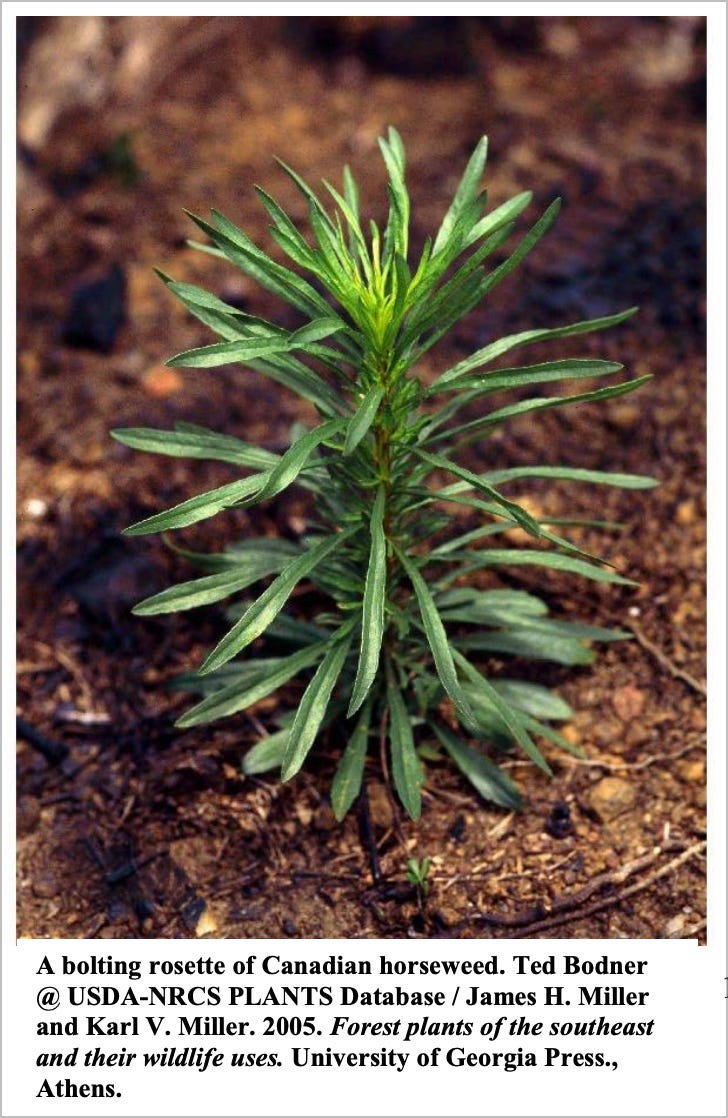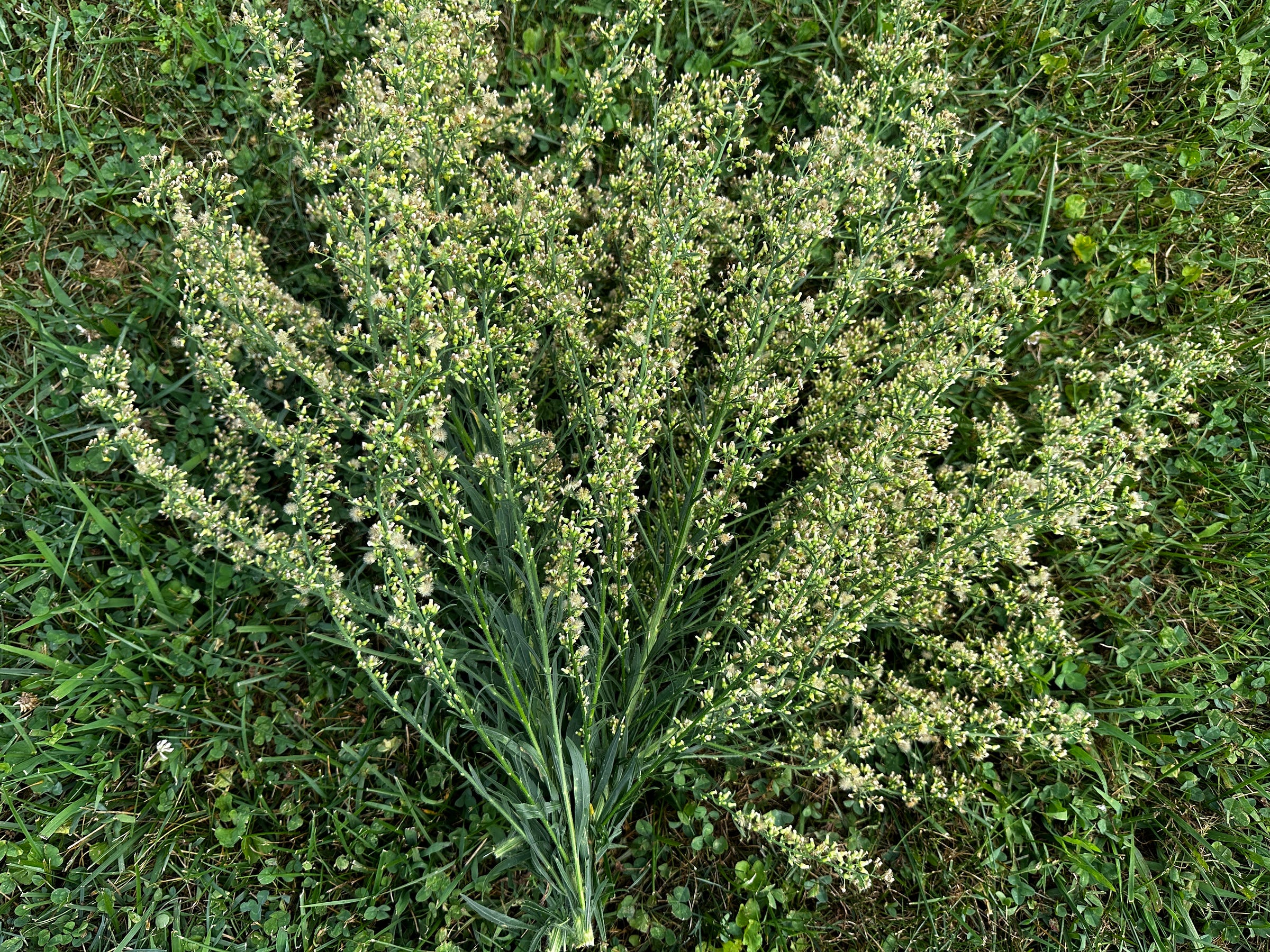Once you recognize it, it is everywhere
I have one purpose here: to cause a single reader to discover a common plant growing right outside their back door, right under there noses, but never noticed. And certainly never named or known.
If a single one of you tells me “YES! After learning about this native plant and actively LOOKING for it, I have seen it. And it is everywhere!” I will consider my small efforts here to have been successful.
The plant is HORSEWEED. Conyza canadensis (formerly genus Erigeron—the fleabanes.)
- It has many common names
- It has tremendous reproductive potential
- It has become a serious herbicide-resistant pest in food crops, especially no-till
- It has spread from Canada to China and Europe, with which North America has shared a native-become-invasive
- Horseweed has been used as herb and medicine. Crush and sniff the leaves for a tarragon-like aroma.
- Its stems can be used to start a fire [I plan to see if I can make this work and will let you see the blisters on my hands afterwards.]
Below are images of the plant in its basal rosette form seen very early in the spring, followed by a couple of 8 foots specimens growing near the Generac here at the house. You will gain an appreciation for the ability of this plant to spread its dandelion-like floating seeds across distances.
And lastly, as testament to my late-onset laziness and knowledge that few readers click links provided, I bundled my unprocessed notes (mostly cut and pasted from the web) in a screenshot of related horseweed info in OneNote. You can search out anything that interests you from there.
And if you “discover” horseweed after reading this, please let me know, and I will consider the two cups of coffee it took me to create this post well worth the trips to the kitchen in the wee hours. — fred



You might be interested in seeing how horseweed “stems” can be used to hand-drill a fire. Go to 3:45 for the fire-starting part, though there is no fire, just the motions involved.
 – Fred First is an author, naturalist, photographer watching Nature under siege since the first Earth Day. Cautiously hopeful. Writing to think it through. Thanks for joining me. Subscribe to My Substack HERE
– Fred First is an author, naturalist, photographer watching Nature under siege since the first Earth Day. Cautiously hopeful. Writing to think it through. Thanks for joining me. Subscribe to My Substack HERE